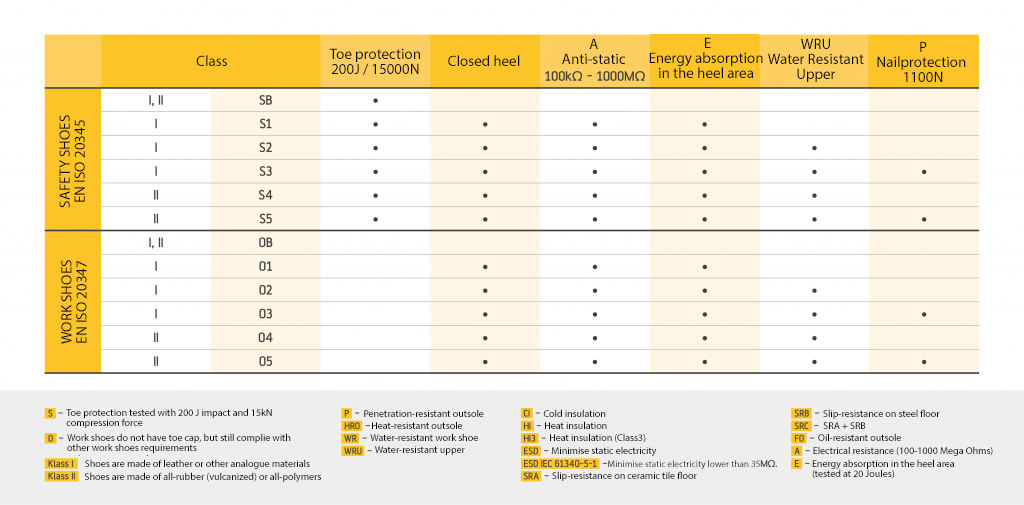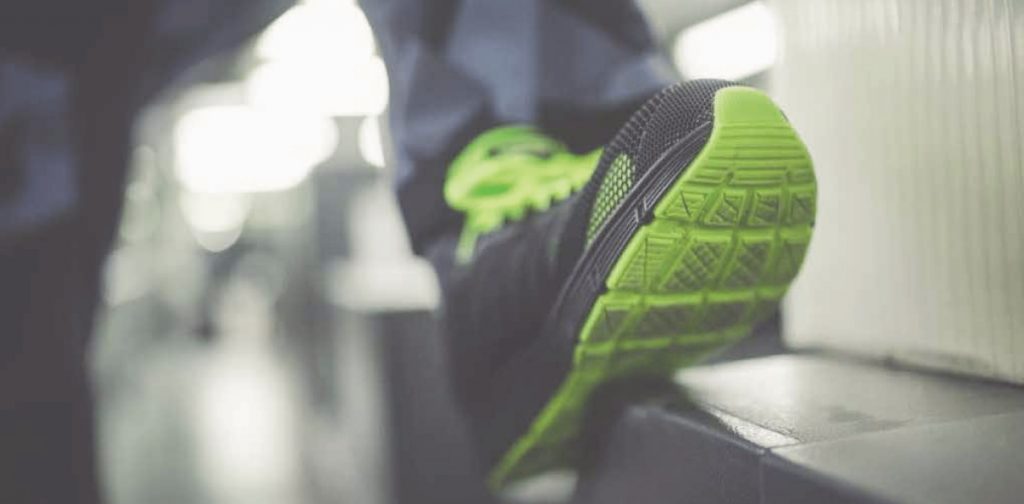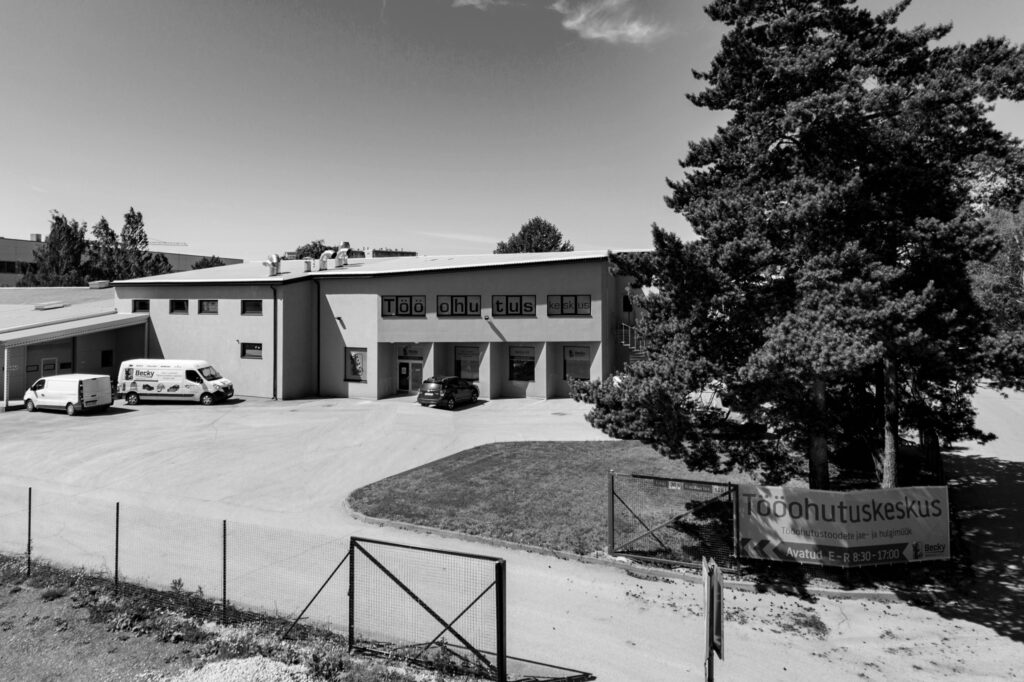HOW TO FIND THE RIGHT SAFETY FOOTWEAR FOR YOU?
When choosing safety footwear, it is important to find footwear with the right characteristics for the working environment and the nature of the work. For the buyer, this can be a difficult decision as there is a wide range of choice and the apparently suitable footwear is often not the safest or most comfortable for the conditions. In order to guide the choice of the right footwear, different safety classes have been created and are marked on the footwear.
Determining the appropriate safety class
The first step for the employer is to find out what risks are likely to occur in the working environment and at the workplace, i.e. to carry out a risk assessment of the working environment. The main risks of injury in work environments are the risk of sticks, toe and foot injuries, static sparks, slipping and ankle sprains. Once the potential risks are known, the instructions of the retailer or footwear manufacturer can be followed.
Table of different safety and footwear classes and their main features.

Different working environments and recommendations.
Internal conditions
- Warehousing/logistics – There is a general risk of foot and toe injuries. Perhaps it would be necessary to choose footwear with protective toe cap. In most cases, there is no risk of punctures and water repellency is not required either. Instead, you can opt for more comfortable and breathable footwear. Recommended safety class S1.
- Lower-risk stationary work – If there is no risk of something heavy falling or getting caught, it is not always necessary to choose footwear with a protective toe cap and focus on comfort. To do this, however, a thorough risk analysis must be carried out. Class O work shoes are well suited. However, if toe protection is necessary, it is worth considering safety class SB.
- Construction and interior finishing – Often high risk, but no need for waterproofing. A popular choice is the S1P safety class.
Outdoor conditions
- Construction – High risk level and also weather comes into play and waterproofing of footwear would be desirable. Footwear with S3 safety class is usually chosen.
- Transport – Various drivers and transport workers. Here the choice varies widely according to the type of work. If the worker’s job is only to be behind the wheel, safety footwear is generally not necessary and work footwear is sufficient. If the worker has to load goods in addition, a safety class would already be required and one could choose either S1 or S2.
- Mechanics, garages, etc. – here it is important that, in addition to mitigating other risks, the footwear has a fuel and oil resistant outsole marked FO.
- Fieldwork in demanding terrain – railway workers, forestry workers, quarries, mines, etc. This is a high-risk working environment and is also highly weather-dependent. Boots with S3 safety class should definitely be used. As the environment is harsh, the footwear should also have a high shaft to prevent debris and water from entering the footwear.
Rain boots should be mentioned as a separate category of footwear. The main advantages of rubber boots are maximum water resistance, easy maintenance and greater hygiene. Rain boots are available in different classes. The safety classes are S4, S5 and the work footwear classes O4, O5. The main areas of use are food processing, agriculture, forestry and fishing.

Other observations to keep in mind.
Safety footwear does not have to be uncomfortable. It is a common belief that a safety footwear is uncomfortable. Surely, for the sake of safety, something must be sacrificed for comfort. Every day, manufacturers are working hard to develop new materials and solutions to make footwear lighter and more comfortable without compromising on safety. In the Becky AS range, for example, you will find Reebok safety footwear, which offers minimal comfort loss compared to casual footwear. There is also an increasing emphasis on the appearance of the footwear.
Straps vs quick fastenings. In some workplaces, shoelaces pose a hazard. They can get caught behind a moving part of a machine and cause serious injury to the worker. The alternative is a variety of quick fasteners. As well as being safe, they are also very comfortable. The Boa® Fit System offers a lifetime guarantee on its quick-release fasteners.

The importance of insoles. An often underestimated but very important aspect of footwear. While many people may at first glance think that it does not matter which insole is in the shoe, for safety and work footwear it is often critical. We have had encounters where the right choice of insole has relieved a worker of back pain or some other chronic ailment. Different insoles are available to suit the worker’s foot profile. Becky AS, in partnership with footwear manufacturer Jalas, offers the opportunity for customers to scan their own feet to find the right insole for each employee’s foot profile.
Correct care. Here the simple truth that properly cared shoes perform better and last longer applies. If you have already invested in your footwear, you might as well maintain it regularly. You can also find a range of shoe care products in the Becky AS range.
If you have further questions, please contact us!










Follow us on social media:
Join our mailing list! Sign up to receive email updates on new products, special offers and more.